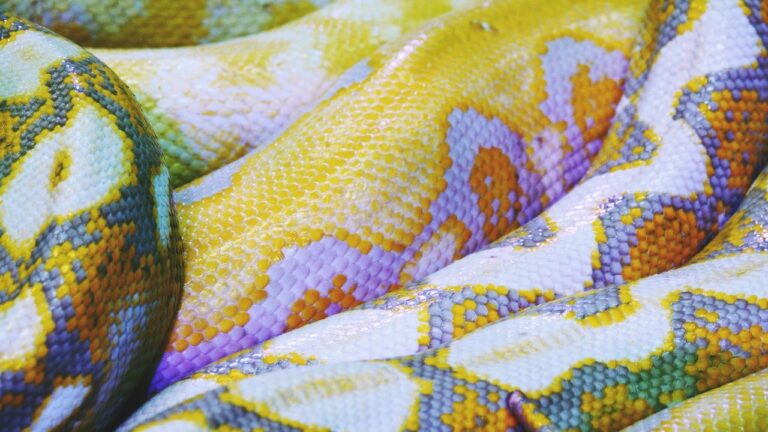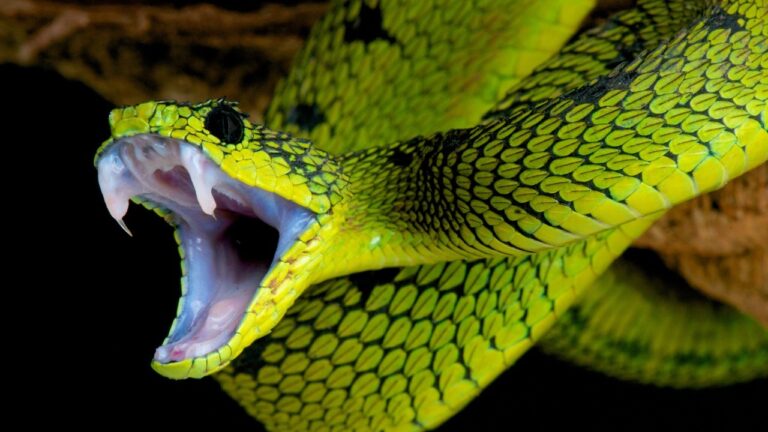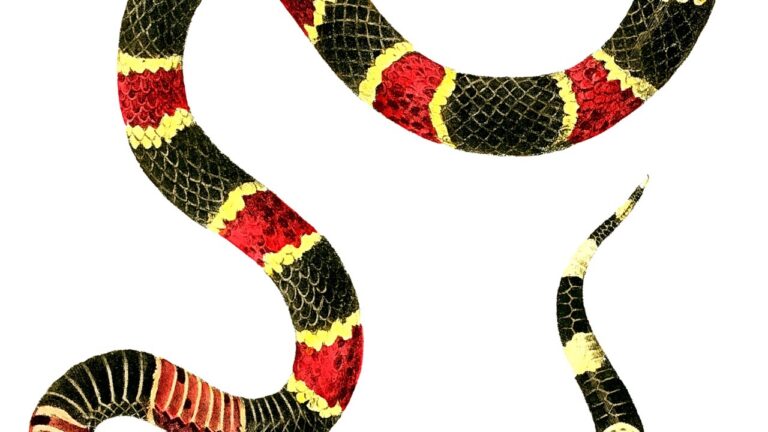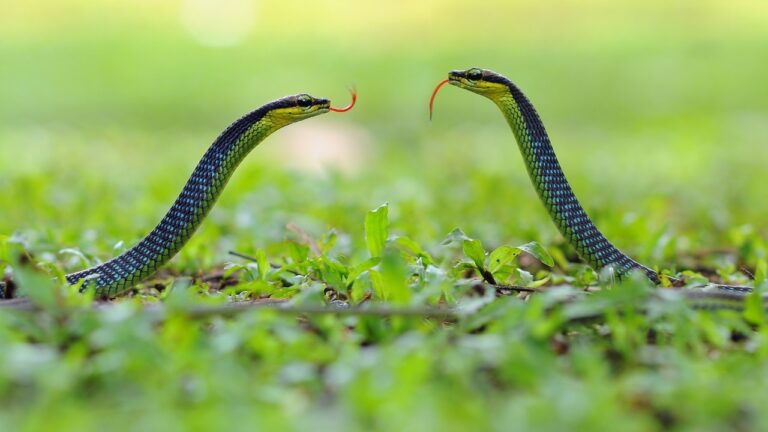Snake Food Suppliers: Expert Tips for Preparing Nutritious Meals
When it comes to the health and wellbeing of your slithering companions, choosing the right snake food suppliers is of utmost importance. Just as humans require a balanced and nutritious diet to thrive, so do snakes. Providing your snake with high-quality food is essential for their growth, development, and overall vitality.
Finding reputable snake food suppliers can sometimes be a daunting task, especially with the abundance of options available in the market. However, by understanding the importance of sourcing the right food for your snake and knowing what to look for in a supplier, you can ensure that your scaly friend receives the nourishment they need to flourish.
In this comprehensive guide, we will explore the various types of snake food available, the criteria for choosing the best snake food suppliers, and expert tips for preparing nutritious meals that will keep your snake healthy and content. So, let’s slither into the world of snake nutrition and unveil the secrets to providing your snake with a well-rounded diet.
Importance of choosing the right snake food suppliers
Choosing the right snake food suppliers is crucial for several reasons. First and foremost, snakes have specific dietary requirements that must be met to maintain their overall health. Different snake species have varying preferences and nutritional needs, making it essential to source food that aligns with their natural diet.
In the wild, snakes consume a wide range of prey, including rodents, birds, and even other reptiles. Captive snakes, on the other hand, rely on their owners to provide them with a balanced diet that mimics their natural feeding habits. By choosing reliable snake food suppliers, you can ensure that your snake receives food tailored to their specific needs, whether it be frozen mice and rats, live prey, or other suitable options.
Moreover, reputable snake food suppliers prioritize the quality and nutritional value of their products. They understand the significance of providing snakes with food that is rich in essential nutrients, vitamins, and minerals. Feeding your snake subpar or low-quality food can lead to nutritional deficiencies, weak immune systems, and other health problems. By opting for trusted suppliers, you can rest assured that you are providing the best possible nutrition for your scaly companion.
Additionally, ethical and humane practices should be a top priority when selecting snake food suppliers. Snakes are sentient creatures, and it is our responsibility as pet owners to ensure that the food they consume is obtained in an ethical and compassionate manner. Reputable suppliers adhere to strict guidelines to ensure the welfare of both their prey animals and the snakes they nourish.
Lastly, the convenience and reliability of the supplier’s shipping and packaging methods are crucial factors to consider. Proper packaging and timely delivery ensure that the food arrives in optimal condition, maintaining its nutritional value and reducing the risk of contamination. The ability to conveniently order and receive snake food allows you to establish a consistent feeding routine for your scaly friend.
Now that we understand the importance of choosing the right snake food suppliers, let’s delve into the various types of snake food available and explore the factors to consider when selecting the best supplier for your snake’s nutritional needs.
Types of Snake Food
When it comes to nourishing our slithering companions, it’s crucial to understand the different types of snake food available. Each option has its own benefits and considerations, so let’s explore the various choices to ensure you make an informed decision for your scaly friend’s diet.
Frozen Mice and Rats
One of the most common and convenient options for snake owners is frozen mice and rats. These pre-killed prey items are readily available from reputable snake food suppliers. Frozen snake food offers several advantages, including a longer shelf life, ease of storage, and reduced risk of injury to your snake during feeding. Additionally, frozen rodents are typically more affordable than their live counterparts.
When feeding your snake frozen prey, it’s important to properly thaw and warm the food before serving it to your snake. This ensures that the prey is at an appropriate temperature, mimicking the warmth of freshly caught prey in the wild. Thawing and warming techniques can vary depending on the size of the prey item and the preferences of your snake.
Live Prey
While frozen rodents are a popular choice, some snake owners prefer to provide their reptiles with a more natural hunting experience by offering live prey. Live prey can help stimulate a snake’s natural instincts and provide mental enrichment. However, it’s important to note that feeding live prey carries its own risks.
Live prey can potentially harm or injure your snake during the feeding process. There is also the possibility of the prey fighting back, leading to injury or stress for both the prey and your snake. Additionally, live prey may carry parasites or diseases that could be transmitted to your snake.
If you choose to feed live prey to your snake, it’s crucial to supervise the feeding process closely to ensure the safety of both your snake and the prey. Consider snake feeding tips to minimize the risk and provide a controlled environment for your snake’s meal.
Other Options
Apart from frozen rodents and live prey, there are other options available to diversify your snake’s diet. Some snake owners choose to offer a combination of both frozen and live prey to provide variety and mental stimulation. This approach can be especially beneficial for snakes that are reluctant to eat or have specific dietary requirements.
In addition to rodents, certain snake species may benefit from a diet that includes other small animals such as chicks, quails, or even fish. These alternative options can provide a source of best snake food for specific snake species that have different nutritional needs or preferences.
It’s important to research and understand the specific dietary requirements of your snake species to determine the most suitable options for their well-being. Consulting with a veterinarian or an experienced snake owner can provide valuable insights into the ideal diet for your scaly companion.
By exploring the different types of snake food available, you can make an informed decision about the best nourishment for your slithering friend. Remember to consider factors such as convenience, safety, and the specific dietary needs of your snake species. With the right choice of snake food, you can ensure your scaly companion enjoys a healthy and balanced diet.
Continue reading about snake food preparation and learn expert tips for preparing nutritious meals for your snake.
How to Choose Snake Food Suppliers
When it comes to providing the best nutrition for your slithery companions, choosing the right snake food suppliers is of utmost importance. Whether you have a vibrant corn snake or an elegant ball python, their dietary needs must be met with care and precision. To help you make informed decisions, here are some expert tips on selecting the ideal snake food suppliers.
Research and Reviews
Before entrusting a snake food supplier with the well-being of your scaly friend, it is crucial to conduct thorough research and read customer reviews. Researching potential suppliers will give you valuable insights into their reputation, reliability, and customer satisfaction. Take advantage of online forums, reptile communities, and social media groups to gather information and hear from fellow reptile enthusiasts. Their experiences can be a valuable resource in guiding you towards the most reputable suppliers in the market.
Quality and Variety of Products
When it comes to snake food, quality is paramount. Look for suppliers that offer high-quality frozen mice and rats, as well as other nutritious options. Variety is also essential for providing a well-rounded diet for your snake. Reptiles, like humans, benefit from a diverse range of nutrients. Opt for suppliers that offer a wide selection of prey items, including different sizes and species. This variety ensures that your snake receives a balanced diet, mimicking their natural feeding habits.
Ethical and Humane Practices
As pet owners, it is our responsibility to prioritize the well-being and ethical treatment of all animals, including the prey we feed our snakes. Seek out suppliers who adhere to ethical and humane practices in their breeding and feeding processes. This includes ensuring that the prey animals are treated with respect and are raised in clean and humane conditions. By supporting suppliers who prioritize ethical practices, you contribute to the welfare of all animals involved in the feeding chain.
Shipping and Packaging
The journey from the supplier to your doorstep is a critical factor to consider when selecting a snake food supplier. Look for suppliers who prioritize safe and secure shipping practices to ensure the prey arrives in optimal condition. Frozen snake food should be packaged in insulated containers with ice packs to maintain the appropriate temperature during transit. For live prey, ensure that the supplier uses appropriate containers and provides clear instructions on how to handle and transfer the prey to your snake’s enclosure. A reputable supplier will take every precaution to ensure the safe and timely delivery of your snake’s meals.
By taking these factors into account, you can make an informed decision when choosing snake food suppliers, providing your scaly companion with the highest quality nutrition. Remember, a well-nourished snake is a healthy snake, and a healthy snake is a happy snake!
If you’d like more information on snake diets or feeding snakes, be sure to check out our other articles on SerpentSuppers.com. We provide valuable resources on everything from frozen snake food to live snake food, snake feeding schedules, and even snake food recipes. We are your go-to source for all your snake feeding needs!
Preparing Nutritious Meals for Snakes
When it comes to keeping your slithering companion healthy and well-nourished, preparing nutritious meals is of utmost importance. In this section, we will explore various aspects of snake food preparation, including proper sizing of food, thawing and warming techniques, nutritional supplements, and feeding schedules.
Proper Sizing of Food
Snakes, like humans, come in different shapes and sizes. Thus, it is vital to ensure that the food you offer them is appropriate for their size and species. Feeding your snake prey that is too large can lead to digestive issues, while feeding them prey that is too small may not provide the necessary nutrients.
To determine the proper size of food for your snake, you should consider the size of the snake’s head and the widest part of its body. The prey item should be approximately the same size as these areas. It is important to note that snakes have the ability to unhinge their jaws to consume prey larger than their head.
Thawing and Warming Techniques
For those who opt for frozen snake food, proper thawing and warming techniques are crucial to ensure that the meal is safe and appealing to your snake. The first step is to remove the frozen prey from the freezer and allow it to thaw in the refrigerator for several hours or overnight. Thawing in the refrigerator helps maintain the integrity of the food and reduces the risk of bacterial growth.
Once the prey is fully thawed, you can use warm water to further warm it to the appropriate temperature. It is important to note that the food should be warm, not hot, to prevent any burns or discomfort to your snake. You can achieve this by placing the prey in a sealed bag and submerging it in warm water for a few minutes.
Nutritional Supplements
While a properly balanced snake diet should provide all the necessary nutrients, nutritional supplements can be beneficial in certain cases. These supplements can help address specific nutritional deficiencies or support the overall health of your snake. However, it is essential to consult with a reptile veterinarian or an experienced snake keeper before introducing any supplements to your snake’s diet. They can guide you on the appropriate types and dosages based on your snake’s specific needs.
Feeding Schedule
Establishing a regular feeding schedule is crucial for the well-being of your snake. Creating a consistent routine helps regulate their metabolism and ensures they receive the appropriate amount of nourishment. The frequency of feeding depends on the age, size, and species of your snake. Young snakes typically require more frequent meals compared to their adult counterparts.
To determine the ideal snake feeding schedule, it is advisable to research the specific dietary requirements of your snake species. Online resources, reputable snake food suppliers, and experienced snake keepers can provide valuable insights. Additionally, observing your snake’s behavior and monitoring its weight can help you fine-tune the feeding schedule to meet their individual needs.
In conclusion, preparing nutritious meals for your snake involves careful consideration of food sizing, proper thawing and warming techniques, the potential use of nutritional supplements, and establishing a suitable feeding schedule. By paying attention to these factors, you can ensure that your slithering friend enjoys a healthy and balanced diet.
Next, let’s explore some safety tips to ensure the well-being of both you and your snake during the feeding process.
Safety Tips
When it comes to handling and storing snake food, there are a few important considerations to keep in mind. Ensuring the safety and health of your snake is paramount, and this begins with proper handling and storage of their food.
First and foremost, it’s crucial to handle snake food with care. Whether you’re dealing with frozen mice and rats or live prey, always remember to use appropriate protective gear such as gloves. This not only protects you from any potential bites or scratches but also helps maintain the hygiene and cleanliness of the food.
Additionally, it’s important to practice good hygiene and sanitation when handling snake food. This means washing your hands thoroughly before and after handling the food to prevent the spread of bacteria or parasites. It’s also a good idea to clean any surfaces or utensils that come into contact with the food to avoid cross-contamination.
When it comes to monitoring and observing your snake, it’s essential to keep a close eye on their feeding behavior and overall health. Pay attention to any changes in appetite, weight, or behavior that may indicate a potential issue with their diet. Regularly consult with a reputable veterinarian who specializes in reptiles to ensure your snake’s nutritional needs are being met.
Remember, safety should always be the top priority when it comes to handling and storing snake food. By following these guidelines and implementing proper hygiene practices, you can help ensure the well-being of your slithery friend.
If you’d like more information on snake food preparation or other snake-related topics, be sure to check out our snake diet and feeding snakes articles. We also offer a wide range of high-quality frozen snake food and live snake food options for your convenience.
| Topic | Link |
|———–|———-|
| Snake Diet | snake diet |
| Feeding Snakes | feeding snakes |
| Frozen Snake Food | frozen snake food |
| Live Snake Food | live snake food |
F.A.Q.
How often should I feed my snake?
Determining the ideal feeding frequency for your snake is crucial to ensuring its overall health and well-being. While the frequency may vary depending on the species, size, and age of your snake, it is generally recommended to feed adult snakes every 1-2 weeks. However, it is important to note that some species, such as young or growing snakes, may require more frequent feedings.
To determine the appropriate feeding schedule for your snake, it is always best to consult reputable sources or seek advice from a knowledgeable veterinarian. They will be able to provide guidance based on the specific needs of your snake.
Can I feed my snake wild-caught prey?
Feeding your snake wild-caught prey is generally not recommended. While it may seem like a natural option, there are several risks and concerns associated with feeding wild-caught prey to your snake.
First and foremost, wild-caught prey can introduce parasites, diseases, and other health issues to your snake. This can lead to serious health complications or even death. Additionally, wild-caught prey may have been exposed to pesticides or other harmful substances that can be detrimental to your snake’s health.
It is always best to opt for commercially bred snake food from reputable snake food suppliers. Frozen snake food is a popular and convenient option that provides a safe and nutritious alternative to wild-caught prey. These frozen rodents are bred specifically for reptile consumption, ensuring they are free from any potential health risks.
Is it necessary to rotate the type of food my snake eats?
While it is not absolutely necessary to rotate the type of food your snake eats, doing so can provide certain benefits. Variety in a snake’s diet can help ensure they receive a wide range of nutrients and prevent them from becoming bored with their food.
By offering different types of prey, such as mice, rats, or chicks, you can provide your snake with a more diverse diet. This can help prevent nutritional deficiencies and promote overall health. Additionally, offering a variety of prey can stimulate your snake’s natural hunting instincts, keeping them mentally and physically active.
However, it is important to note that some snakes can be picky eaters and may refuse certain types of food. If your snake is thriving on a specific type of prey and shows no signs of nutritional deficiencies, there may be no need to rotate their diet.
Remember, it is always best to consult with a knowledgeable reptile veterinarian or reputable snake food supplier for specific dietary recommendations based on your snake’s species, age, and individual needs.
Now that you have a better understanding of the frequently asked questions regarding snake feeding, let’s move on to the conclusion of this article, where we will summarize the key takeaways and provide some final tips and insights.
Conclusion
In conclusion, choosing the right snake food suppliers is of utmost importance when it comes to the health and well-being of your slithering companion. The type of food you provide for your snake plays a significant role in their overall nutrition and vitality. By selecting reputable suppliers that prioritize quality, variety, ethical practices, and proper packaging, you can ensure that your snake receives the nourishment it needs to thrive.
When preparing nutritious meals for your snake, it is vital to consider factors such as proper sizing of the food, thawing and warming techniques, nutritional supplements, and establishing a feeding schedule. These elements contribute to a well-rounded and balanced snake diet. Remember, a well-fed snake is a happy and healthy snake.
Maintaining safety measures while handling and storing snake food is essential to avoid any contamination or health risks. Practicing good hygiene and sanitation, and closely monitoring and observing your snake during feeding can help prevent any potential issues.
Frequently asked questions about snake feeding, such as the frequency of feedings, the feasibility of using wild-caught prey, and the necessity of rotating food types, have been addressed in this article. By following the guidelines provided, you can make informed decisions regarding your snake’s diet.
To further expand your knowledge on snake food, diet, and feeding tips, be sure to check out our website for additional resources and information. We offer a wide range of articles, including snake food recipes, the best snake food options, and tips for homemade snake food preparation.
Remember, your snake’s health and well-being should always be a top priority. By selecting reputable snake food suppliers, preparing nutritious meals, and following proper feeding practices, you can ensure that your slithering friend lives a long, happy, and healthy life.
Thank you for reading and happy snake feeding!







